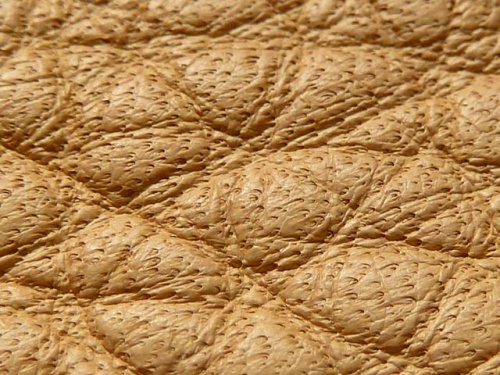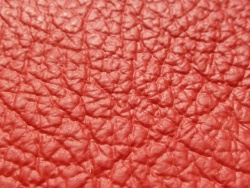Breathability of leather
The breathability of leather
Breathability is one of the special properties of leather, which no other substitute material exudes. The ability to expel moisture in the form of vapour is one of the main characteristics of leather and what makes it unique. This can be essential, especially for shoes. In warm and waterproof hiking boots made of leather, you will never sweat as much as in rubber boots.
The ability to absorb sweat and humidity, and then release it, is also apparent on car seats and leather furniture and is better than on imitation leather.
However, breathability is different depending on the type of leather. Sensitive, porous aniline leather has a significantly higher breathability than heavily pigmented car leather. Even higher is the breathability of nubuck and suede.
Microscope photograph of the surface of an aniline leather. The pores of the skin are clearly visible, and they are not covered by a colour layer.
Nubuck and suede are very porous, but not waterproof.
Also other quality features such as firmness, colour fastness, dirt resistance and overall longevity are important criteria for some applications of leather. For this purpose, the surface of smooth leather is protected by the application of a colour layer against stains and fading. This improves the durability and long-term appearance of the leather, but significantly reduces the vapour permeability. However, breathability of such leathers is still substantially high when compared to artificial leather.
Leather with strong pigmentation.
The respiratory ability of leather is sometimes improved by perforating leather.
Additional information















 a kotori web solution
a kotori web solution